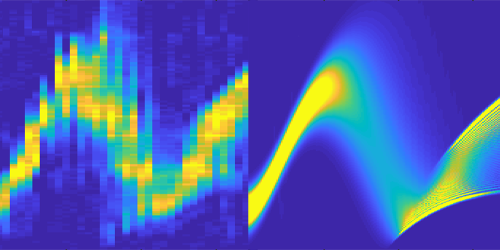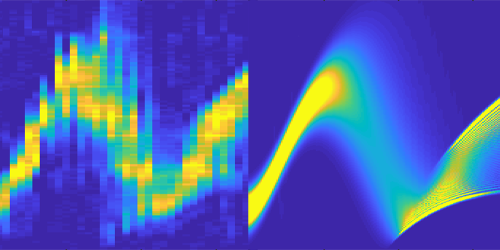Atoms Put On a Bloch Party
When a constant electric field is applied to a crystal, the free electrons may undergo back-and-forth motions called Bloch oscillations. Despite being predicted almost 90 years ago, Bloch oscillations have been extremely challenging to detect in simple crystals. Physicists have managed to observe this phenomenon in other systems, such as semiconductor heterostructures and optical lattices containing ultracold atoms. However, previous optical lattice studies have only been able to infer the oscillations from measurements of the atoms’ momenta. Now, an experiment has directly observed Bloch oscillations in the positions of atoms in an optical lattice.
Bloch oscillations occur when particles traveling within a periodic potential are exposed to a constant force. While the force accelerates the particles in one direction, interference effects due to diffraction from the potential can lead to oscillatory motions. The behavior was initially predicted for electrons in a crystal, but electrons scatter inside a crystal too often for the oscillations to occur.
In an optical lattice, however, scattering is minimal, and the force and potential can be tuned to maximize the oscillations. David Weld from the University of California, Santa Barbara, and colleagues took advantage of this tunability to observe Bloch oscillations in real space, as opposed to momentum space. The team loaded a Bose-Einstein condensate of lithium atoms into an optical lattice with a 0.5- 𝜇m period. For their constant force, they applied a magnetic field with a spatial gradient. By imaging the positions of the atoms at different times, they revealed oscillations with an amplitude of roughly 100 𝜇m—matching their predictions. From their data, the researchers mapped out the band structure of the lattice, demonstrating that Bloch oscillations could be a useful probe for uncovering the band structure in complex systems, such as those with a topological phase.
This research is published in Physical Review Letters.
–Michael Schirber
Michael Schirber is a Corresponding Editor for Physics based in Lyon, France.





